 Tank of the Month
Tank of the Month
Tank of the Month
Livestock
My fish keeping approach with this tank was to try and keep many pairs and harems, and stay away from the traditional advice of one of each kind of fish. Getting and creating pairs is often a challenge, but thanks to places on the web such as Diver’s Den of Live Aquaria that are willing to provide well conditioned healthy pairs of fish, this became less of a challenge. The current fish population in the tank is listed below. There has been some change in the fish population over the years due to attrition, removal of certain fish, accidental jumping out of tank, etc. There are several mated pairs that spawn regularly – Bellus Angels, Joculator Angels, Damsels, Clownfish, Anthias, Scooter Blennies are some that I have witnessed spawning.
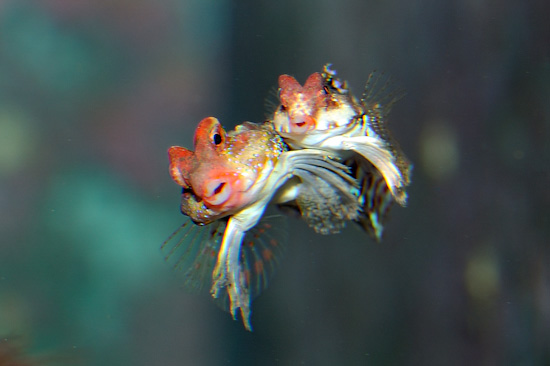 |
Fish and Inverts
|
Common Name:
|
Scientific name
|
|
|
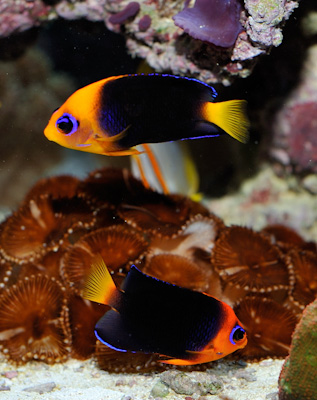 |
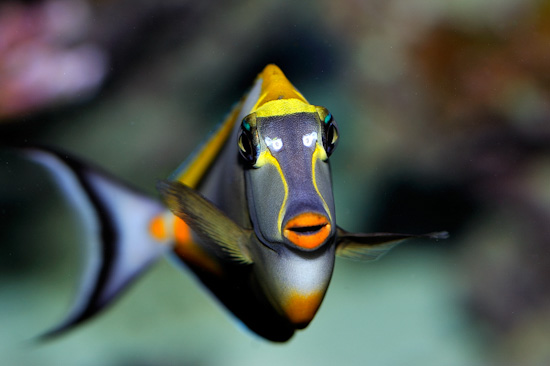 |
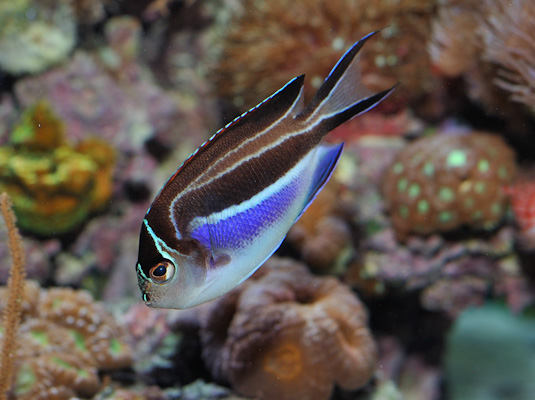 |
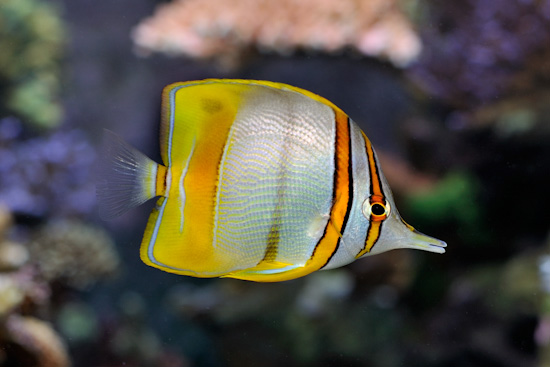 |
Corals
The tank is dominated by SPS corals - majority of SPS corals I have in my collection were started as fragments and over the years the tank has undergone several changes as the corals grow. I am terrible at IDing corals beyond the general species names. Given the difficulty that even expert scientists have in identifying captive specimens with pictures in the wild I won’t even try to attempt it. Identifying them with the ridiculous common marketing names would be difficult too since I don’t remember or care for some of the marketing names. The majority of the coral in my tank have a story and a connection to people, places and friends I got them from and serve as repository of memories. While the tank is dominated by SPS corals, there are several LPS and soft corals scattered throughout the tank. The quest to learn about keeping all these different corals often overwhelms my desire for tank aesthetics.
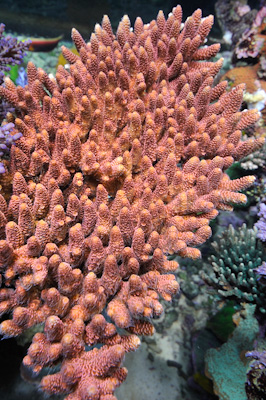 |
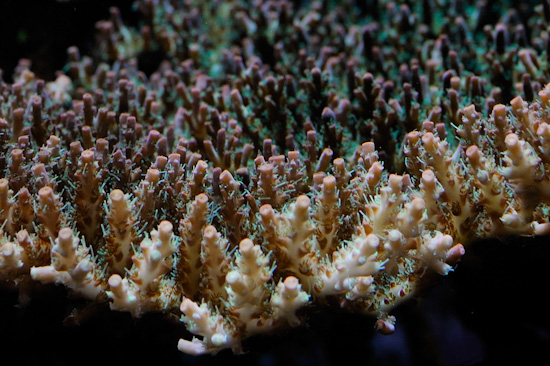 |
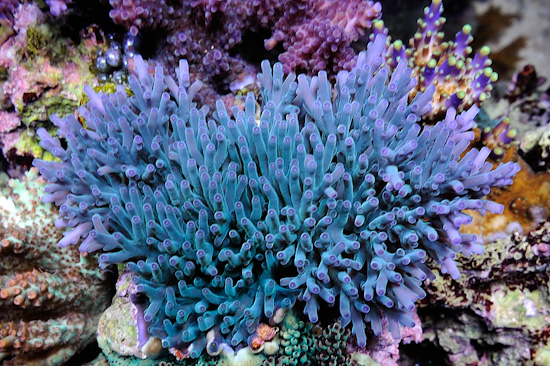 |
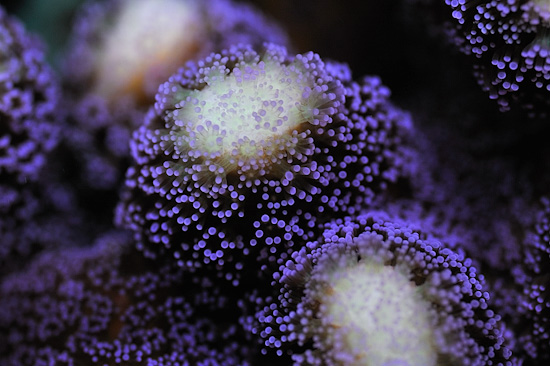 |
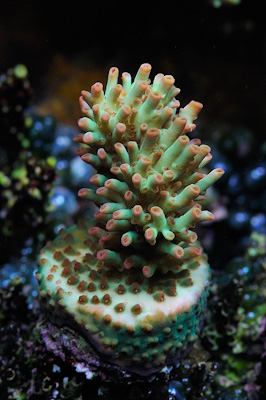 |
 |
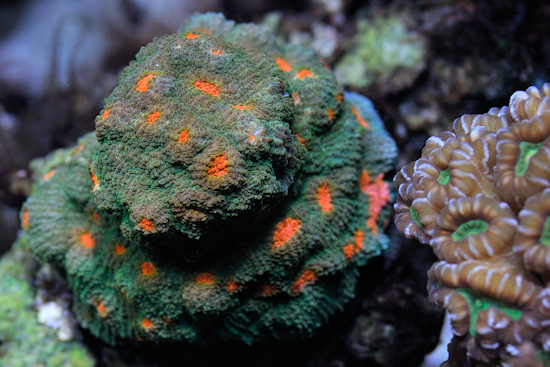 |
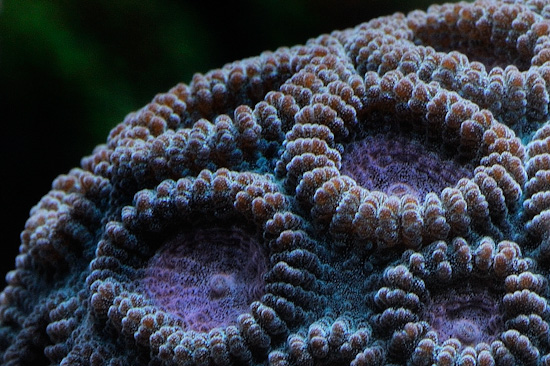 |
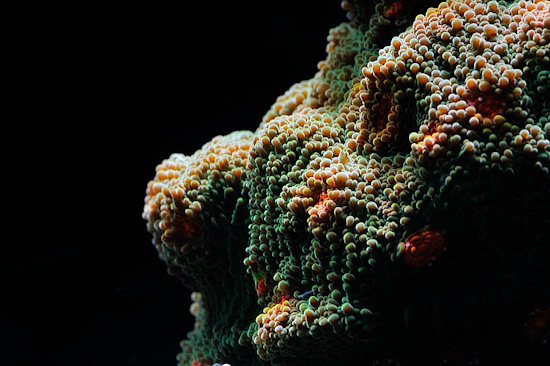 |
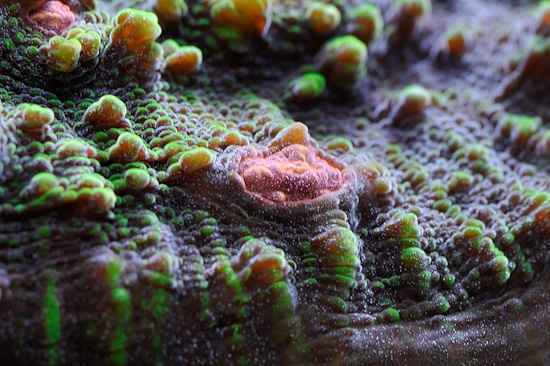 |
Problems and Issues
Even the best reef tanks have problems and issues that are encountered over the life span of the aquarium. Sharing the trial, tribulations and solutions is an important aspect of improving reefkeeping. While this reef system was designed to provide a more robust mechanical and electrical systems and it has held up well with this aspect of the design, problems related to biology and chemistry still arise occasionally. One significant problem that was encountered was Acropora Eating Flat Worms (AEFW). Despite my utmost care when introducing new corals, AEFW were discovered in the aquarium through the unexplained loss of a few colonies. Treating each new addition with flatworm dips was clearly not enough to keep the flatworms out the tank. Not setting up a quarantine system and following rigid protocols of treatment was a mistake that should be avoided if one seeks to set up a pest free system. I could not bear ripping apart the tank to remove the corals that had grown to large colonies and move them to quarantine and treatment system. After recovering from the initial shock and disbelief, talking to several friends who had already gone through this, I was convinced it is not the death blow that I expected. To deal with this I resorted to the “Blast it with a baster” approach. Using a turkey baster the corals are blasted with sudden high velocity jets of water to dislodge the AEFW which are then readily eaten by most fish. This has now become a weekly to biweekly part of the maintenance. Interestingly, the flatworms only appear on few colonies of coral, not on all the corals, and healthy corals can usually handle them in small numbers. I have been using this approach now for well over 2 years and as you can see the corals are thriving, growing well and maintaining good colors in spite of the AEFW.
Another major problem that was encountered last summer was that the nitrate levels in the aquarium had crept up to 50 ppm. I do not regularly check Nitrate levels and was quite surprised to see that they had reached such high levels. There was little outward sign of this, other than several corals darkening in color. There were several reasons for this rise. I was away most of the summer and neglect and overfeeding eventually manifested itself in the high nitrate levels. This gave me an opportunity to experiment with some nitrate reduction strategies. After having read and heard of great reviews of the Zeovit method and treating it like a skeptic, I decided that it might be worth my while to at least experiment with it to see if it would bring down the nitrate levels. In Aug, 2009, I set up the Zeovit systems with the minimum recommended components (Zeo Reactor, Zeo Stones, ZeoStart2, and ZeoBac), primarily with the intent to see if it would bring down the nitrate levels. Starting with half the recommended dosage I gradually ramped it up to full dose over 4 months, and am still using it. The nitrates have dropped to around 2 ppm (as tested with the Salifert Test Kit). Clearly, these carbon dosing methods are able to provide a nutrient transport mechanism for nitrate and phosphate.
Final Thoughts
Reef keeping is an incredible hobby, one that kept me fascinated for over 20 years and I hope for at least another 20 years of enjoyment. It has provided me with additional pleasure of meeting and making friends with people all over the world, through the sharing of the common thread of reef keeping.
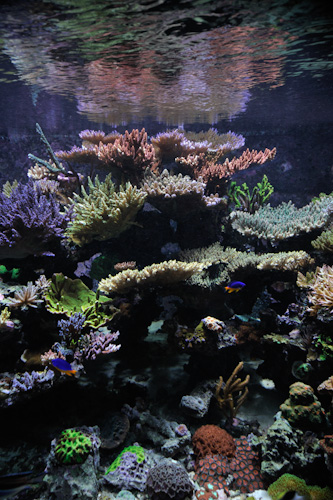 |
Feel free to comment or ask questions about my tank in the Tank of the Month thread on Reef Central.




